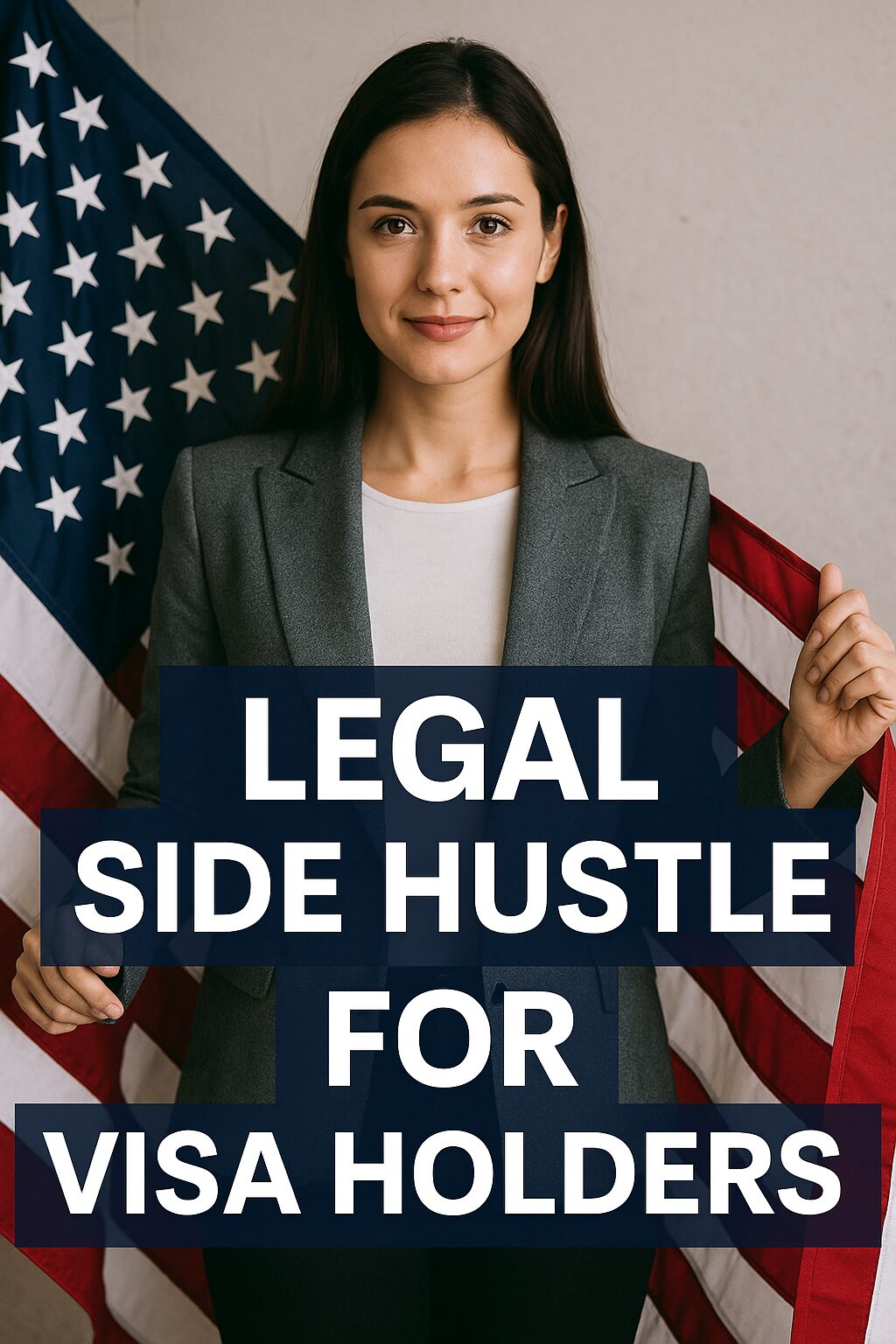Stay Legal, Stay Profitable – A Practical Guide for Immigrants
Side hustles can be a great way to build income and independence — but if you’re living in the U.S. (or another country) on a visa, earning the wrong way can put your status at risk.
This guide explains how to structure your freelance work, online business, or digital income so you don’t violate your visa, while still building real income streams.
1. Understand This First: Not All Side Hustles Are Legal on Every Visa
Just because something is “online” doesn’t mean it’s allowed.
Most common mistake:
Thinking you can do anything as long as it’s remote.
Reality:
Different visas = different rules.
A J-1 intern can’t start an online coaching business. An F-1 student can’t freelance unless they’re approved under OPT.
But a green card holder? No problem.
2. Key Rule: Only Earn Through Approved Channels
You need to understand whether your visa allows work at all, and if so, through what channels.
| Visa Type | Can You Side Hustle? | Notes |
|---|---|---|
| F-1 | Mostly No | Only through CPT/OPT, and with conditions |
| J-1 | No | Unless pre-approved by sponsor |
| H-1B | With Limits | Only through sponsoring employer |
| E-2 | Yes | Only in your registered business |
| O-1 | Yes | Must be tied to your field of extraordinary ability |
| Green Card | Yes | No restriction |
| B-1/B-2 | No | Strictly forbidden |
If you’re not sure, always consult an immigration attorney.
3. Don’t Mix Income: Separate Your Visa-Linked Job and Side Hustle
Let’s say you’re on an H-1B and want to start a side blog. If that blog starts making money — that could be a violation unless:
- Your employer sponsors the activity
- You switch to a self-employment-friendly visa
What to do instead:
- Keep your day job legally separate
- If side hustle grows → apply for visa adjustment (e.g., to O-1 or E-2)
4. Best Side Hustle Structures for Visa Holders
If your visa allows limited self-employment (like O-1, E-2, green card), here are safe, scalable structures:
a) U.S. LLC (Limited Liability Company)
- Simple setup
- Keeps business income separate
- Works for consultants, creators, coaches
b) Sole Proprietor (if you’re eligible)
- No legal separation from personal income
- Riskier but easy for early stage
c) Use a U.S. platform (Fiverr, Upwork)
- Platforms act as a buffer
- Some immigrants receive 1099s, others use PayPal business
Key Tip:
Never receive payments to a personal account if your visa restricts freelance income. Use business accounts and always keep records.
5. International Income: Can You Work With Clients Abroad?
It depends on where your work is performed, not who pays you.
If you’re physically in the U.S. on a restricted visa:
- Working for a foreign client still counts as U.S.-based work
- Which means it can violate your terms
Safer alternatives:
- Offer services for free while building a portfolio
- Generate passive income (like royalties, not active labor)
6. Safe Earning Methods for Visa Holders
Not every form of income requires active labor.
Here are side hustles with lower legal risk (but still check your visa specifics):
| Method | Is It Legal? | Notes |
|---|---|---|
| Book royalties (Amazon KDP) | Often allowed | Treated as passive income |
| Stock market dividends | Yes | Capital income, not earned |
| YouTube ad revenue | Varies | Considered passive, but requires platform terms compliance |
| Affiliate links on blogs | Often gray area | Depends on level of involvement |
| Rental income | Yes | Real estate investment is legal for most visas |
| Course sales (if pre-recorded) | Safer than live coaching | Depends on engagement level |
7. What Happens If You Get Caught?
Consequences range from warning to visa revocation and deportation.
Immigration authorities may investigate if:
- Your tax return shows unapproved income
- Clients submit 1099 forms to IRS tied to your name
- You apply for a green card and your work history raises flags
Always assume the government knows. Stay safe.
8. Bonus: What If Your Side Hustle Grows?
If your side hustle becomes real income (>$1,000/mo), it’s time to:
- Create an LLC
- Track every dollar
- Talk to an immigration lawyer about switching to:
- O-1 (Extraordinary Ability)
- E-2 (Investor)
- EB-2 NIW (if national interest applies)
Building income is good.
Getting deported is not.
9. Real Examples of Visa-Friendly Side Hustles
| Hustle | Visa Type | Why It Works |
|---|---|---|
| Self-published books (Amazon KDP) | F-1, O-1, E-2 | Royalty-based, passive |
| Selling digital templates on Etsy | O-1, E-2 | Low involvement once uploaded |
| YouTube automation channel | E-2, Green Card | Passive ad revenue |
| Coaching with entity sponsorship | O-1 | As long as it aligns with your field |
| Investment income | All | Non-employment income |
10. Final Checklist Before You Launch
Confirm your visa type and work authorization
Decide if you’ll earn passively or actively
Choose legal structure (LLC, platform, etc.)
Avoid co-mingling income with your visa job
Get professional advice early
Final Thoughts: Build Smart, Not Just Fast
Many immigrants rush into side hustles thinking online = invisible.
But that myth can cost you your status.
Structure matters. Timing matters. Compliance matters.
If you build your side hustle the right way, you can stay legal, stay safe, and still build wealth — all at the same time.

